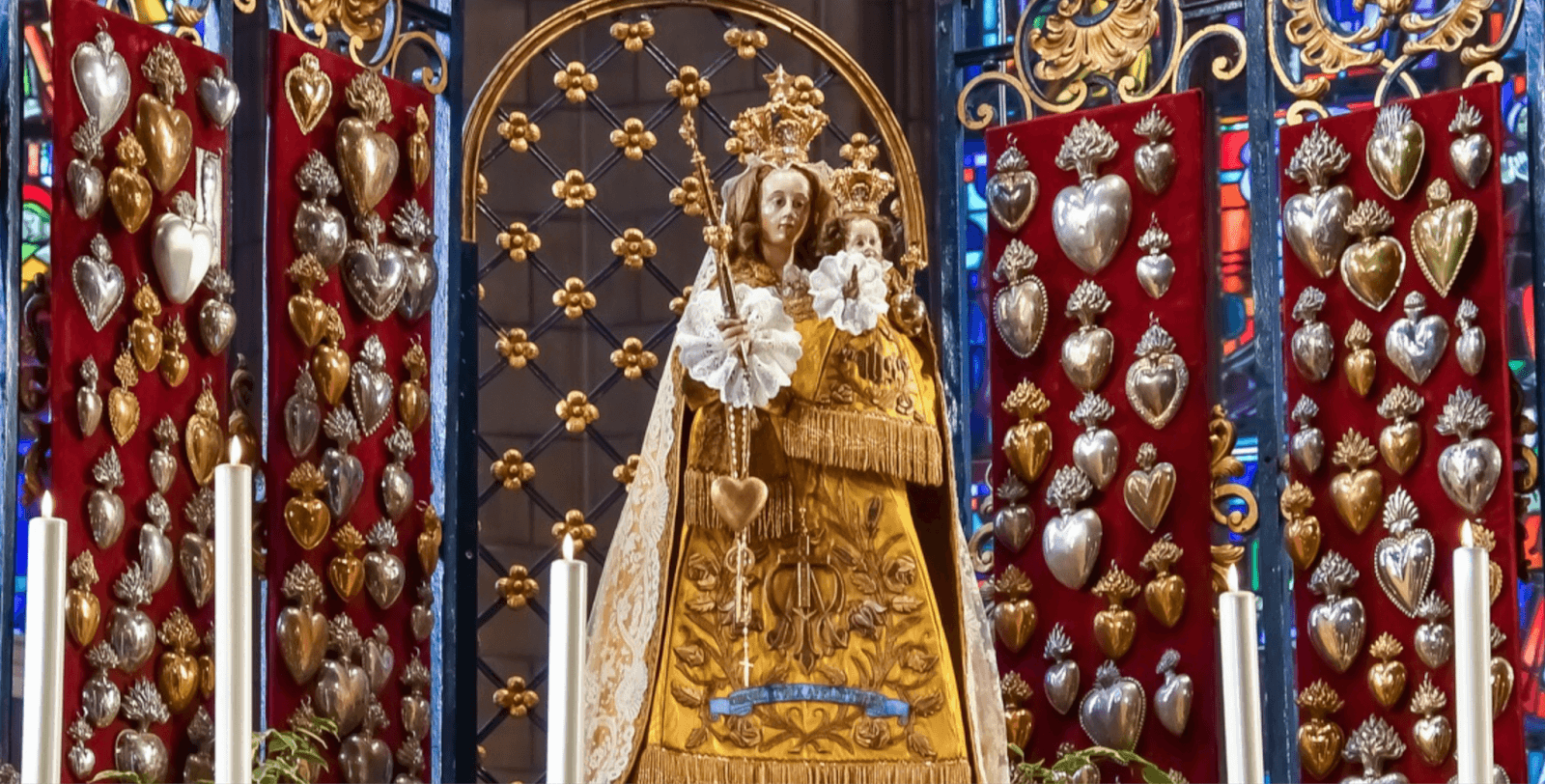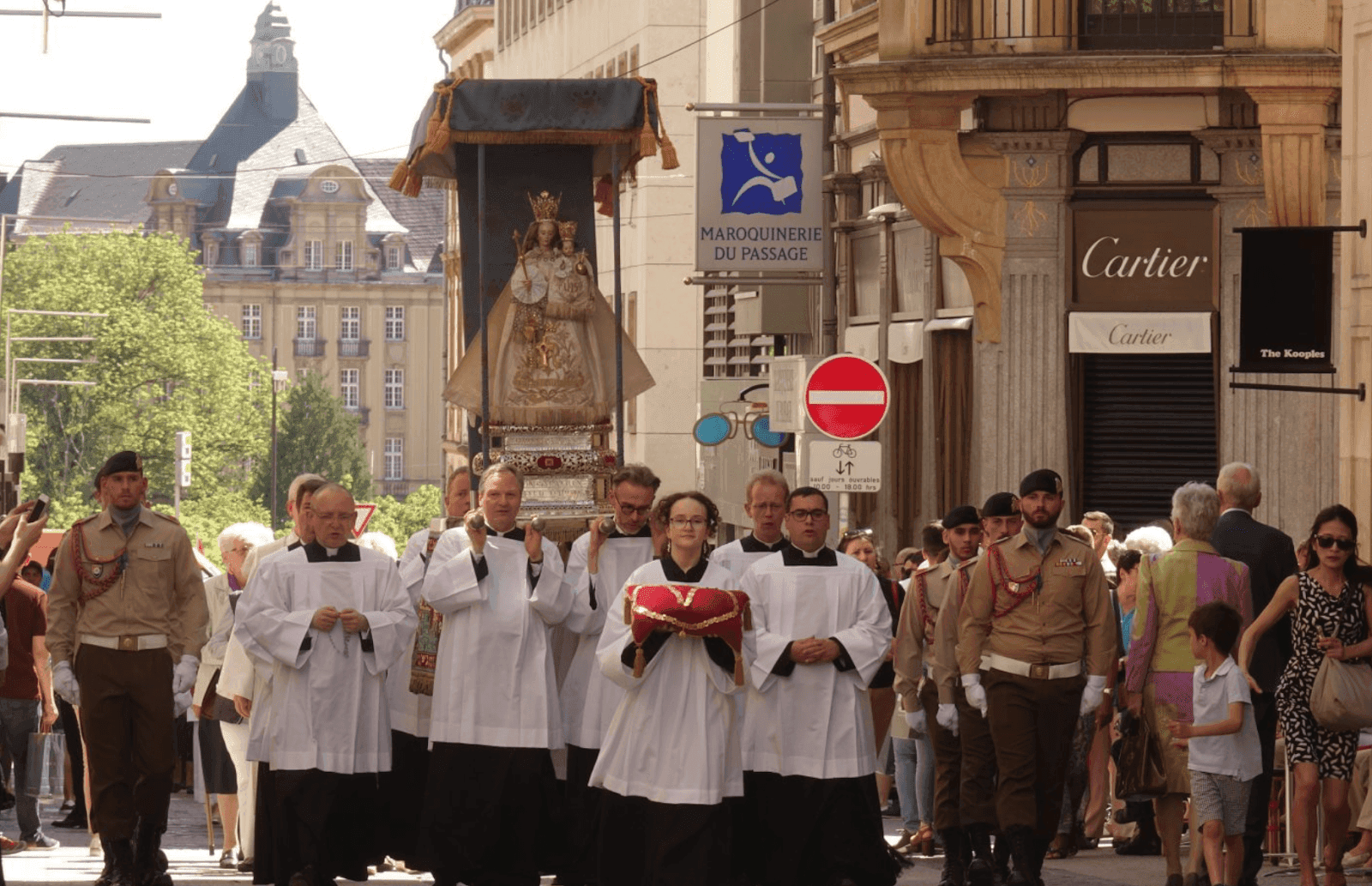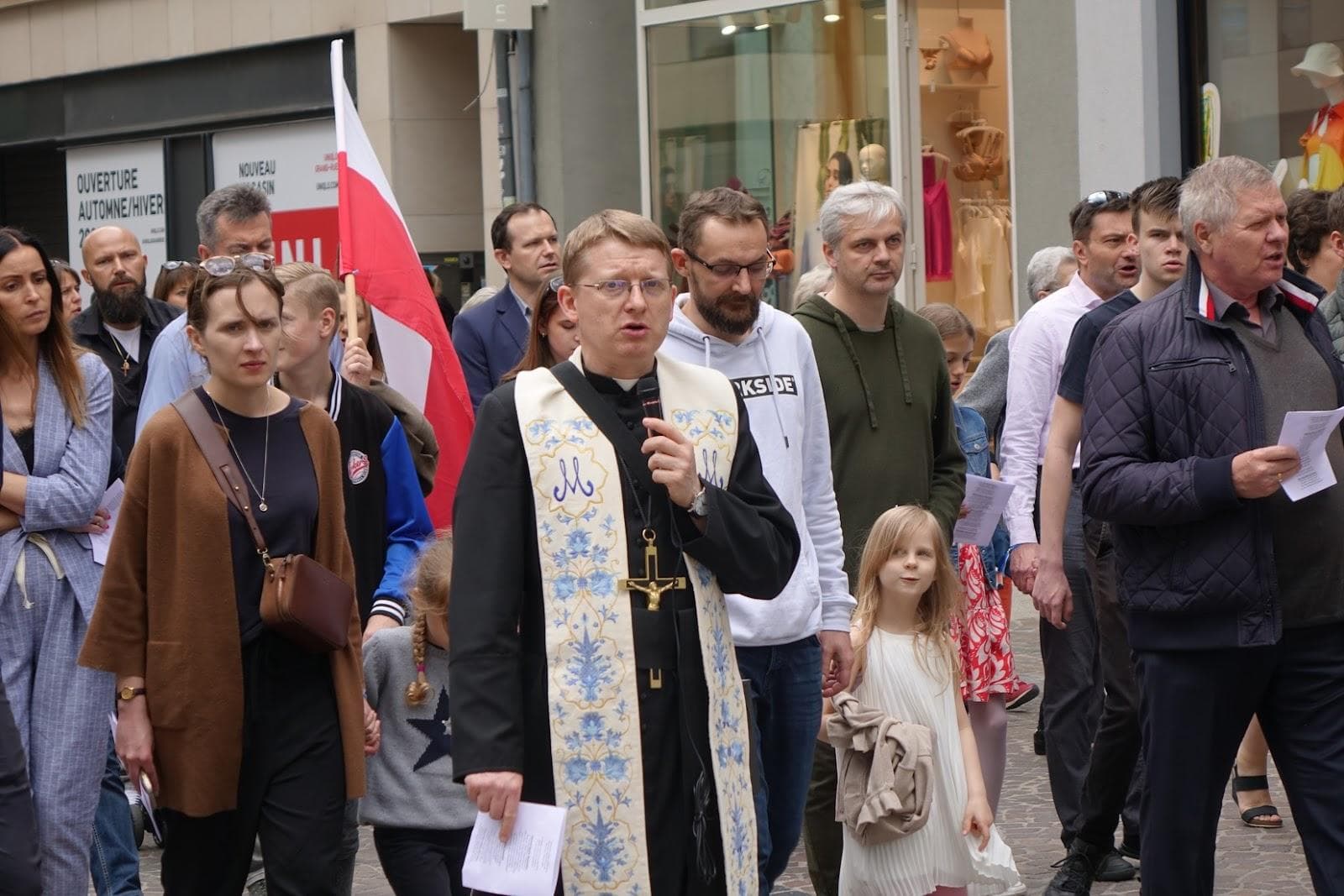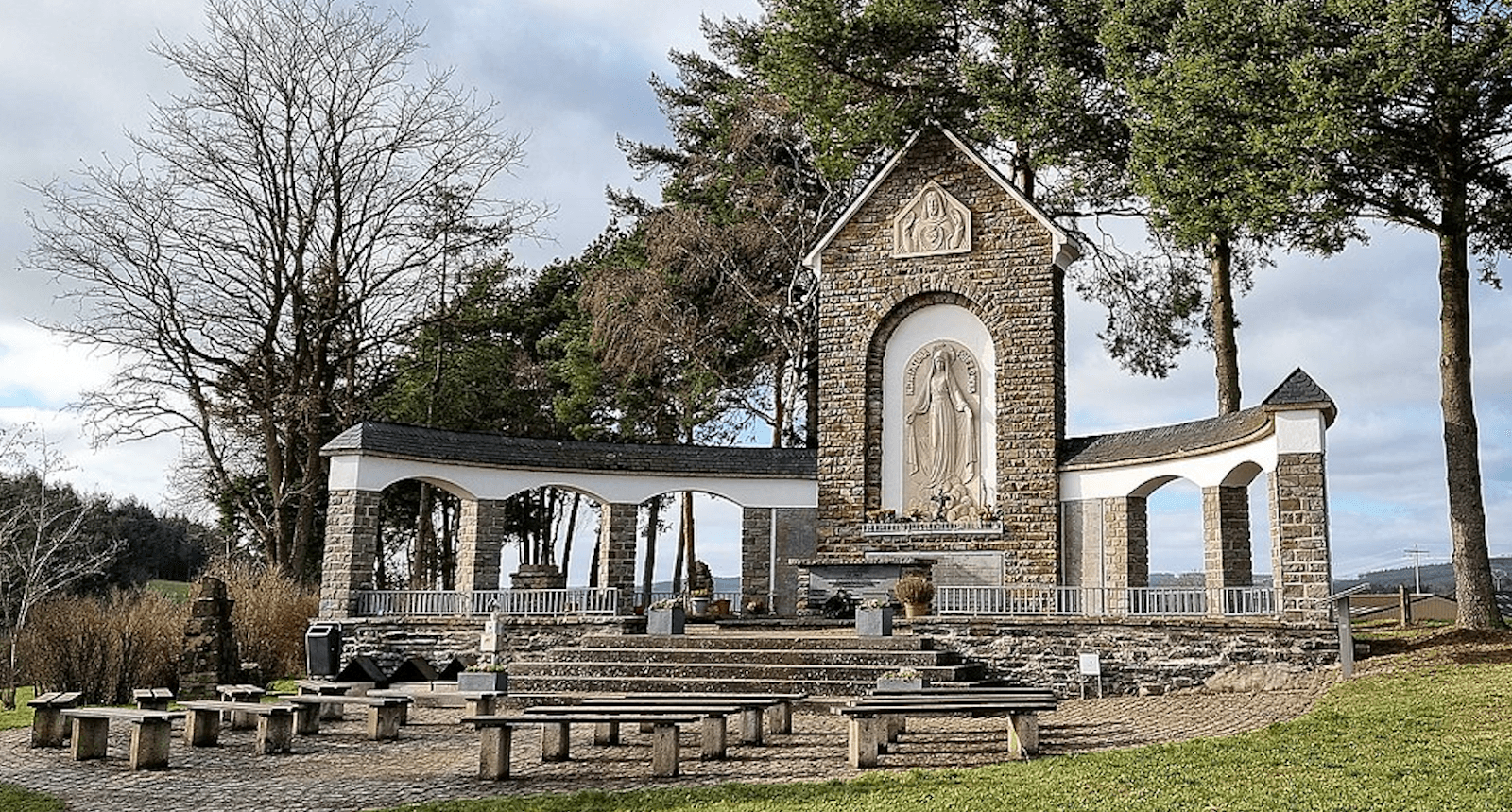
Assumption Day in Luxembourg: Our Lady and the celebrations
Assumption Day in Luxembourg is a time of both spiritual reflection and communal celebration, marking the belief in the Virgin Mary's ascent to heaven. It's a public holiday that brings together families and communities for church services, processions, and shared meals.
The Assumption of the Blessed Virgin Mary is a cherished holiday for Luxembourg. It combines religious faith and cultural traditions. From its historical roots to its vibrant festivities, this day has a deep meaning for the people of Luxembourg.
The Assumption of the Blessed Virgin Mary is a very important holiday in Luxembourg. On this auspicious occasion, the faithful gather in churches adorned with vibrant candles to partake of Holy Communion and offer heartfelt prayers to the Blessed Virgin Mary. This holy day fosters a sense of unity and devotion among the people of Luxembourg, strengthening their spiritual bonds and reinforcing their faith.
In 2024, Assumption Day will fall on August 15. This day is a national holiday, schools and most businesses will close their doors for the day.
Read more
Assumption day traditions in Luxembourg
The day of the Assumption holds great significance in Luxembourg. Assumption Day, also known as the Feast of the Assumption, commemorates the belief that the Virgin Mary was taken up to heaven, body and soul, at the end of her earthly life. It is a deeply rooted tradition in Catholicism and has been celebrated worldwide for centuries. The holiday has been celebrated in various forms and settings over the centuries too, reflecting the cultural and religious heritage of the nation. In Luxembourgish, the day of the Assumption is pronounced "Léiffrawëschdag".

Pre-Christian harvest festival or the festival of the sea goddess Isis
Traditional consecration of the herbs in the 17th century
"Assumption" recipes
The traditions for celebrating the Assumption in Luxembourg vary from region to region. In some regions, people organize communal meals, and meetings with loved ones, there's music and dancing.
In the oldest Roman Catholic cathedral of Luxembourg City, a festive mass, a consecration of herbs and a procession are celebrated. Luxembourgers also call the church the Luxembourgish Mariendoum (Notre-Dame Cathedral, The Cathedral of Our Lady).
The church is open on Sundays from 9 a.m. to 7 p.m. and on all other days from 8 a.m. to 6 p.m. Please call for a Mass schedule as times are subject to change.
- Address: 2240, Ville Haute, Luxembourg
- Phone: +(352) 46 20 23
- Website: www.cathol.lu
The Cathedral of Our Lady was not originally a cathedral and did not bear the name of Our Lady. For most of its history, the building existed as a church. Only in the second half of the nineteenth century, when Luxembourg had its own Catholic bishop, did the status of the building change to "cathedral". And the name of Our Lady has been given to the temple about the same time - before that the church bore the name of the Apostle Peter, and even he was not the first of its patron saints.
Moreover, even the building itself has been modified throughout history. Two of the cathedral’s three towers were completed in the first half of the twentieth century. And half a century later, the only original tower burned down, so now we can only see its restored version.
On August 15, Christians around the world celebrate the Assumption of the Blessed Virgin Mary. Masses are celebrated with prayers, hymns, and blessings dedicated to the Virgin Mary. Most Christians believe that when the Virgin Mary died, her body was taken to heaven to be reunited with her soul.
Opening Prayer for the Liturgy of the Assumption: "All-powerful and ever-living God, you raised the sinless Virgin Mary, mother of your Son, body and soul to the glory of heaven. May we see heaven as our final goal and come to share her glory. We ask this through our Lord Jesus Christ, your Son, who lives and reigns with you and the Holy Spirit, one God, for ever and ever. Amen."
In 1950, Pope Pius XII declared the Assumption to be an official dogma of the Roman Catholic Church: "We proclaim and define it to be a dogma revealed by God that the immaculate Mother of God, Mary ever virgin, when the course of her earthly life was finished, was taken up body and soul into the glory of heaven". The word "Assumption" comes from the Latin verb "assumere" - "to take to oneself".
Catholic heritage
Orthodox heritag
Key point
- In Constantinople, there were temples dedicated to the Virgin Mary as early as the fourth century. The Western Church has celebrated the Assumption since the fifth century, and the Greek Church since the sixth.
- The Assumption and burial of the Virgin Mary are described in no less than 70 later apocryphal books. The apocrypha vary in content and language, including Greek, Syriac, Coptic, Latin, Irish, Armenian, Arabic, Ethiopian, Georgian, and Slavonic.
- In the eighth century, John Damascene formalized in the Church the plot of the apocryphal text Transitus Mariae, which describes the Assumption:"In the presence of the apostles gathered around her bed, also in the presence of her divine Son and many angels, Mary died and her soul, rose to heaven, accompanied by Christ and the angels. Her body was buried by the disciples. Difficulties developed among certain of the Jews who wished to dispose of her body. Various types of miracles occurred to convince them to honor Mary's body. On the third day, Christ returned. At the request of the apostles the soul of Mary is reunited with her body. Accompanied by singing angels, Christ brought Mary to paradise.”
In addition to the religious services, Assumption Day in Luxembourg is also marked by lively cultural celebrations and festivities. Even though for most of the country it is just another day off.
And yet. In the small village of Greiveldange, the ancient ceremony of blessing herbs and the harvest theme of the Assumption still live on. The local priest blesses a bundle of herbs brought by various members of the community.
August is harvest time in the Luxembourg countryside. On Assumption Day, the Christians of Greiveldange bring a Wësch to church: a bundle of field herbs, spikelets and vegetables from the kitchen garden. In the past, no more than ten herbs were brought, but as time went on, more and more fragrant plants were added to the bundle. Now, a Wësch can consist of 35 herbs, vegetables, and grains.
For the protection and prosperity of livestock, it is customary to hang a Wësch in a stable.
After the service, it's time for a traditional Luxembourgish meal of fried ham, beans and potatoes with bacon. Discover the national cuisine, folklore, crafts, games and dances in the picturesque village of Greiveldange every year on Assumption Day. And read more about Luxembourg's national cuisine in our article: Traditional food and national cuisine in Luxembourg.
You can learn more about Luxembourg saints in the Knowledge Library article: Famous people from Luxembourg, that you probably don't know.
Our Lady of Luxembourg
People of Luxembourg were devoted to the Blessed Virgin Mary throughout the country's history. This devotion was initiated by Jesuits as early as the 17th century. It is great enough for Virgin Mary to hold the title of Our Lady of Luxembourg within the country.
The Oktav in honor of the Virgin Mary is one of the main events of the Luxembourgish year. For two weeks, the faithful of Luxembourg and the surrounding area make a pilgrimage to the capital to worship the Virgin Mary statue.

The pilgrimage originated during a plague epidemic. After a provincial council proclaimed Our Lady of Consolation patroness and protector of Luxembourg, the faithful flocked to the Glacis Chapel to ask for help and healing from illness.
Since the 19th century, Our Lady of Consolation has been called Our Lady of Luxembourg, a reference to the close ties between the people of Luxembourg and the Virgin Mary.
The Oktav ends with a procession in which the faithful carry a Virgin Mary statue through the streets of Luxembourg.

Pilgrimages and processions on the Assumption Day
On Assumption Day, the faithful make pilgrimages to various holy sites in Luxembourg. The most important destination is the Basilica of Our Lady of Luxembourg in the capital, where the faithful pay homage to the Virgin Mary.
You will be able to participate in the procession if you come to the Celebration Mass. The procession begins after the consecration of the herbs.

Everyone can participate in the procession: just follow the clergy. You can hold the flower of the Virgin Mary: the lily, a symbol of chastity, purity and simplicity. You can wear a blue vestment: blue symbolizes truth and clarity, the color of heaven.
Shrines and devotional sights in Luxembourg: tribute to Our Lady and St Vitus

Monument to Our Lady of Fatima in Wiltz
Echternach dance procession
Frequently Asked Questions (FAQ)
Where was Mary taken to heaven
When will the Feast of the Assumption be celebrated in 2024
Is Assumption Day a national holiday in Luxembourg
Where did the Virgin Mary spend the last years of her life
Source: nationaltoday.com, www.patriarchia.ru, luxembourg.public.lu, www.noteworthydays.com, www.luxtimes.lu
We took photos from these sources: Sixteen Miles Out for Unsplash, cathol.lu, en.wikipedia.org, luxembourg.public.lu, wikipedia.org, mullerthal.lu


